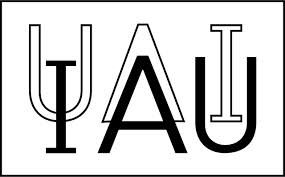Sub-Group Name
IAU Sub-Working Group for the Visually Challenged
Coordinator(s): Amelia Bayo
Sub-Group Description
Because astronomy is often visually based, many people assume that it cannot be
made accessible. The study of the universe in multiple wavelengths has
revolutionized our understanding and appreciation of the cosmos. Our understanding
of how the universe works has come quite far with the plethora of imagery from
ground-based and space observatories all of the world.
Interestingly, most of the electromagnetic spectrum is invisible to all of us;
astronomers have merely translated data into a visible medium. We have, at this
juncture, a unique opportunity to take a bold step forward in relaying scientific
information — to combine multi-wavelength data, imagery and tactile graphics to
communicate the beauty and science of the universe to people regardless of their
own visual ability.
The IAU Sub-Working Group for the Visually Challenged, seeks to bring astronomy
to people living with visual challenges and to build tools, strategies, and resources to
enable equality and inclusion of our target group.
Sub-Group Goals
The under-representation of people with disabilities in the space science field has
been recognized and documented by respected studies and institutions. To help
remedy this situation, special needs students have to be engaged with products that
are dedicated to their needs. Special needs educators have the knowledge and
expertise in instructional strategies for these students but may not have the particular
special needs resources required for teaching space science. There is an
overwhelming thirst for materials to help these teachers in their efforts to introduce
space science to special needs students.
Use Astronomy as a way to improve the representation of visually challenged people
in the field and share the beauty of the Universe with the members of the general
public who may be visually impaired.
- Establish an international reference network, composed of institutions and
individuals which have specific astronomy programs and activities directed to
our target group. - Identify representative organisations that have particular skills needed by our
target group, such as European Blind Union, or National Federations for the
Blind. - Enhance and support the work of the international network by identifying
specific needs in the community and providing tools to support the
development of projects and initiatives. - Assemble and provide a free and publicly available repository of best
practices, experiences, tools and resources related to astronomy initiatives in
hospitals, nursing homes, and prisons. - Build upon pre-existing projects and experiences in order to contribute to the
advancement of existing initiatives and encourage the creation of new ones. - Contribute to the different fields across inclusion, by working closely with other
sub-groups of the IAU WG on Astronomy for Equity and Inclusion.
National Contacts
| Country | Contact person |
| Puerto Rico | Asociación Puertorriqueña de Ciegos Inc. https://www.gleauty.com/PR/San-Juan/181650606409/Asociaci%C3%B3n-Puertorrique%C3%B1a-de-Ciegos |
| Puerto Rico | Asociación de no videntes Luz de Amor, Inc. https://opencorporates.com/companies/pr/25652-121 |
| USA | National Federation for the Blind https://www.nfb.orghttps://www.nfb.org/resourceshttps://www.nfb.org/about-us/contact-us |
National Allies
| Country | Service & Contact person |
| Puerto Rico | Centro Educativo Para Ciegos e Impedidos de Puerto Rico Dr. Ana María Marqués |
| Puerto Rico | Comunidad Manolo.net, http://www.manolo.net, Prof. José Manuel Álvarez |
